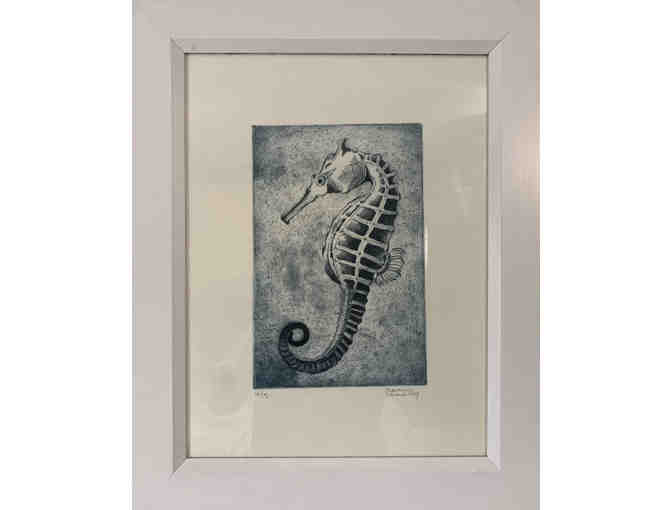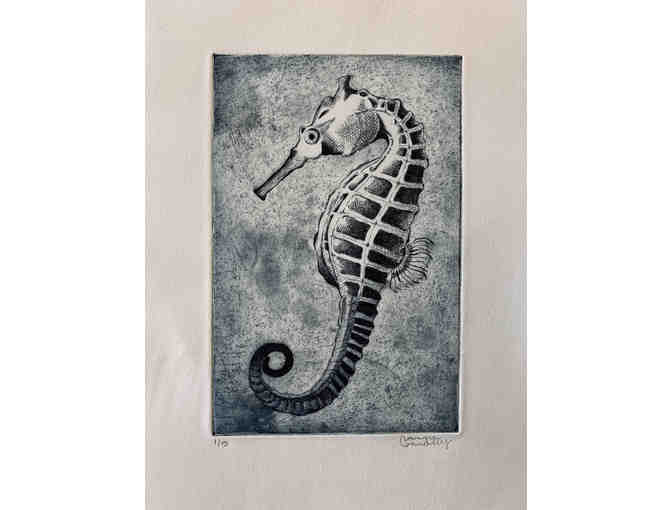Art
Sea Horse Etching - by Camryn Connolly - SJS Art Teacher
- Item Number
- 392
- Estimated Value
- 80 USD
- Sold
- 40 USD to rc6a9bda4
- Number of Bids
- 4 - Bid History
Item Description
This beautiful, one-of-a-kind, sea horse etching was hand crafted by our very own art teacher, Camryn Connolly! Matted and framed, it measures 12" x 15".
Etching is a print making process in which lines or areas are incised using acid into a metal plate in order to hold the ink. The plate is first polished to remove all scratches and imperfections from the surface. When the surface is completely smooth, it is covered evenly with a layer of acid resistant varnish or wax. Then, using a stylus called an etching needle, the printmaker gently scratches away parts of the ground following the design, thereby exposing the metal underneath. Once the entire design has been drawn into the ground, acid is poured over the plate or the plate is dipped in acid. The acid eats into the metal only in the exposed areas creating recesses that can retain ink.
After the ground is removed, the plate is ready for inking. In an intaglio process, the ink is retained in the incised lines. A cloth ball, cardboard tab, or equivalent material is used to gently spread ink across the whole face of the plate; the same material is used to remove most of the excess ink from the surface. The plate is further cleaned using a tarlatan rag (heavily starched cheesecloth).
As a last measure, printmakers often use the sides of their hand to wipe away the last bits of ink. In certain cases, a printmaker can choose not to clean the plate entirely, but to leave a thin layer of ink on the plate to create tone.
Once the surface of the plate is wiped clean to a satisfactory level, the plate is placed on the bed of a rolling printing press, with the ink side up. Although some early intaglio prints appear to have been produced by simply pressing the paper against the plate with one's hands, in most cases the pressure required to force the paper into the finely cut lines entailed the use of a special press equipped with rollers.
Before the plate is moved through the press, it is covered with a sheet of dampened paper and then printing blankets, often made of felt, to soften the pressure on the metal plate.
Once printed onto it's paper, the etching's design appears in reverse of the original on the plate.
Item Special Note
* This item is available for pickup at St. John the Baptist School.
SAINT JOHN THE BAPTIST SCHOOL stores data...
Your support matters, so SAINT JOHN THE BAPTIST SCHOOL would like to use your information to keep in touch about things that may matter to you. If you choose to hear from SAINT JOHN THE BAPTIST SCHOOL, we may contact you in the future about our ongoing efforts.
Your privacy is important to us, so SAINT JOHN THE BAPTIST SCHOOL will keep your personal data secure and SAINT JOHN THE BAPTIST SCHOOL will not use it for marketing communications which you have not agreed to receive. At any time, you may withdraw consent by emailing Privacy@frontstream.com or by contacting our Privacy Officer. Please see our Privacy Policy found here PrivacyPolicy.


